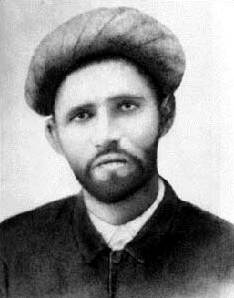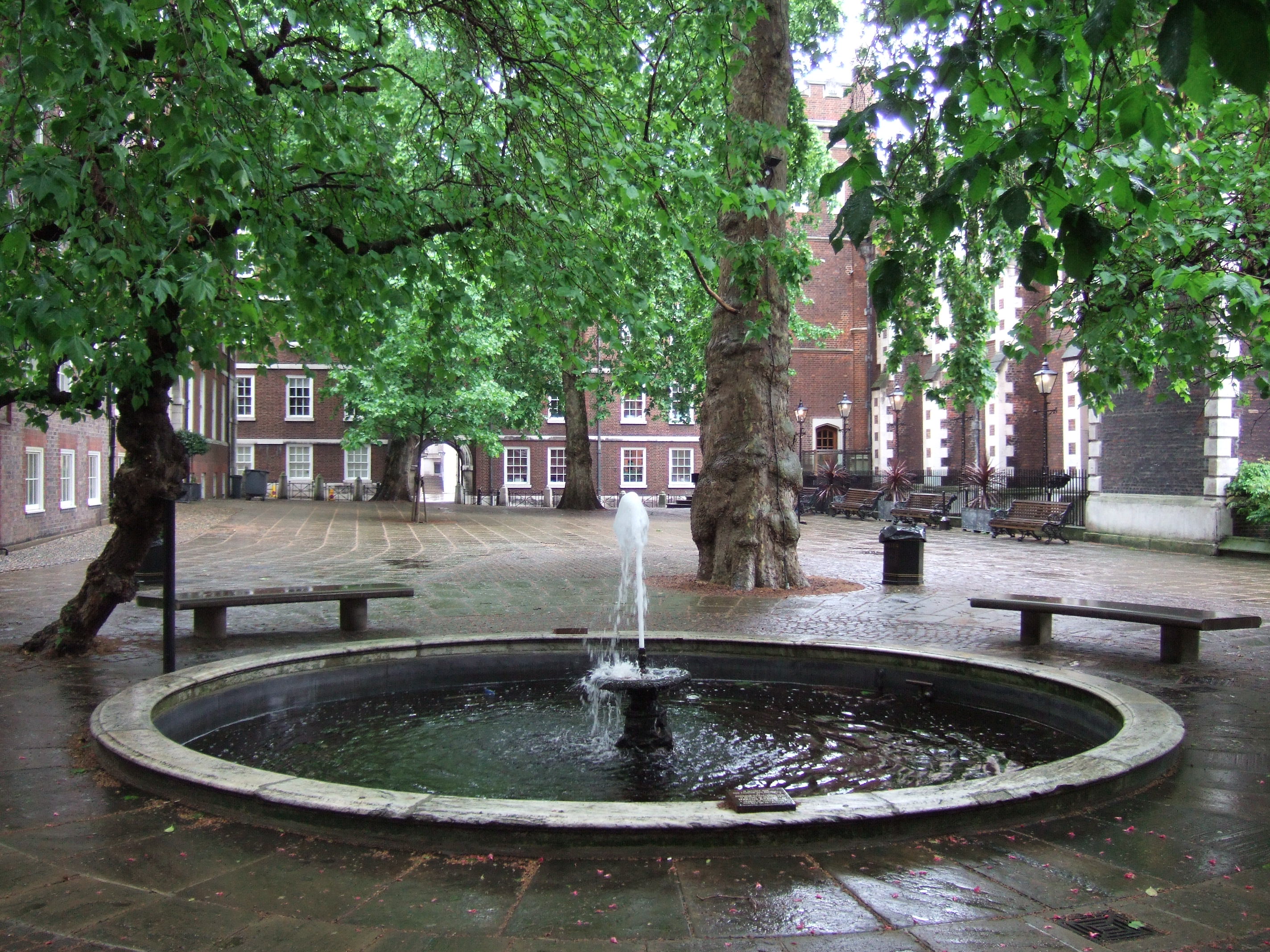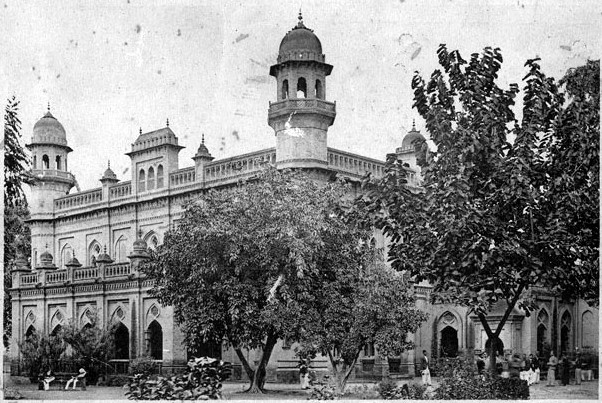|
Sir Abdul Rashid
Sir Mian Abdul Rashid, KCSI ( ur, ; 29 June 1889 – 6 November 1981) was the first Chief Justice of Pakistan, legal philosopher, one of the founding fathers of Pakistan, and a jurist. Education He was born on 29 June 1889 in a well-known Arain family, namely Mian family of Baghbanpura of Lahore. He received his early education at Central Model School in Lahore, and got his B.A. from Forman Christian College, also in Lahore, and a Tripos and Masters from Christ's College, Cambridge University in 1912. In 1913, he was called to the Bar from the Middle Temple, London. Law career He started practising law at Multan and later shifted to Lahore in 1913 where he joined the chambers of Mian Muhammad Shafi. He was then appointed Assistant Legal Remembrancer. In the summer of 1923, he was appointed acting judge of Lahore High Court on recommendation of Shadi Lal, who was then Chief Justice of the said court. From 1927 to 1931, he officiated as Government of Punjab's Advocate. He wa ... [...More Info...] [...Related Items...] OR: [Wikipedia] [Google] [Baidu] |
Muhammad Ali Jinnah
Muhammad Ali Jinnah (, ; born Mahomedali Jinnahbhai; 25 December 1876 – 11 September 1948) was a barrister, politician, and the founder of Pakistan. Jinnah served as the leader of the All-India Muslim League from 1913 until the inception of Pakistan on 14 August 1947, and then as the Dominion of Pakistan's first Governor-General of Pakistan, governor-general until his death. Born at Wazir Mansion in Karachi, Jinnah was trained as a barrister at Lincoln's Inn in London. Upon his return to British Raj, India, he enrolled at the Bombay High Court, and took an interest in national politics, which eventually replaced his legal practice. Jinnah rose to prominence in the Indian National Congress in the first two decades of the 20th century. In these early years of his political career, Jinnah advocated Hindu–Muslim unity, helping to shape the 1916 Lucknow Pact between the Congress and the All-India Muslim League, in which Jinnah had also become prominent. Jinnah beca ... [...More Info...] [...Related Items...] OR: [Wikipedia] [Google] [Baidu] |
Order Of The Star Of India
The Most Exalted Order of the Star of India is an order of chivalry founded by Queen Victoria in 1861. The Order includes members of three classes: # Knight Grand Commander (GCSI) # Knight Commander ( KCSI) # Companion ( CSI) No appointments have been made since the 1948 New Year Honours, shortly after the Partition of India in 1947. With the death in 2009 of the last surviving knight, the Maharaja of Alwar, the order became dormant. The motto of the order was "Heaven's Light Our Guide". The Star of India emblem, the insignia of order and the informal emblem of British India, was also used as the basis of a series of flags to represent the Indian Empire. The order was the fifth most senior British order of chivalry, following the Order of the Garter, Order of the Thistle, Order of St Patrick and Order of the Bath. It is the senior order of chivalry associated with the British Raj; junior to it is the Most Eminent Order of the Indian Empire, and there is also, for women ... [...More Info...] [...Related Items...] OR: [Wikipedia] [Google] [Baidu] |
Shadi Lal
Sir Shadi Lal (14 May 1874 – 27 March 1945) was an Indian jurist. He served as the Chief Justice of Lahore High Court between 1920 and 1934, the first Indian head of an Indian high court. Born in Rewari, Punjab Province, Lal was educated at Punjab University and Balliol College, Oxford. He was called to the English bar at Gray's Inn in 1899. Returning to India, he was called to the Lahore bar, and became Principal of the Law College, Lahore, and Dean of the Law Faculty of Punjab University. He was elected to the Punjab Legislative Council by Punjab University in 1909, and was re-elected in 1912 and 1913. Lal was appointed a Judge of the Lahore High Court in 1919, and promoted Chief Justice in 1920, becoming the first Indian to head an Indian high court. He was knighted in 1921. In 1934 he was appointed to the Judicial Committee of the Privy Council and sworn of the Privy Council A privy council is a body that advises the head of state of a state, typically, but not al ... [...More Info...] [...Related Items...] OR: [Wikipedia] [Google] [Baidu] |
Mian Muhammad Shafi
Sir Mian Muhammad Shafi, (10 March 1869 – 7 January 1932) was a lawyer and politician from British India.Profile of Muhammad Shafi (politician) on tripod.com website Retrieved 28 July 2017 As a practising barrister, he quickly gained renown and during the 1920s and 1930s he came to be regarded as one of India's leading lawyers. Retrieved 28 July 2017 Early life and education Mian Muhammad Shafi was born on 10 March 1869 in , the capital of the |
Multan
Multan (; ) is a city in Punjab, Pakistan, on the bank of the Chenab River. Multan is Pakistan's seventh largest city as per the 2017 census, and the major cultural, religious and economic centre of southern Punjab. Multan is one of the List of oldest continuously inhabited cities#Asia, oldest continuously inhabited cities in Asia, with a history stretching deep into antiquity. The ancient city was the site of the renowned Multan Sun Temple, and was besieged by Alexander the Great during the Mallian Campaign. A historic cultural centre of the wider Punjab, it was conquered by the Ummayad military commander Muhammad bin qasim, Muhammad bin Qasim. The city later became independent as the capital of the Emirate of Multan in 855 A.D., before subsequently coming under the rule of empires such as the Ghaznavids, the Ghurids and the Mamluk Sultanate, Mamluks. In 1445, it became capital of the Langah Sultanate. In 1526, it was conquered by the Mughal Empire. Multan Subah would become o ... [...More Info...] [...Related Items...] OR: [Wikipedia] [Google] [Baidu] |
Middle Temple
The Honourable Society of the Middle Temple, commonly known simply as Middle Temple, is one of the four Inns of Court exclusively entitled to call their members to the English Bar as barristers, the others being the Inner Temple, Gray's Inn and Lincoln's Inn. It is located in the wider Temple area of London, near the Royal Courts of Justice, and within the City of London. History During the 12th and early 13th centuries the law was taught, in the City of London, primarily by the clergy. But a papal bull in 1218 prohibited the clergy from practising in the secular courts (where the English common law system operated, as opposed to the Roman civil law favoured by the Church). As a result, law began to be practised and taught by laymen instead of by clerics. To protect their schools from competition, first Henry II and later Henry III issued proclamations prohibiting the teaching of the civil law within the City of London. The common law lawyers migrated to the hamlet of H ... [...More Info...] [...Related Items...] OR: [Wikipedia] [Google] [Baidu] |
Christ's College, Cambridge
Christ's College is a constituent college of the University of Cambridge. The college includes the Master, the Fellows of the College, and about 450 undergraduate and 170 graduate students. The college was founded by William Byngham in 1437 as God's House. In 1505, the college was granted a new royal charter, was given a substantial endowment by Lady Margaret Beaufort, and changed its name to Christ's College, becoming the twelfth of the Cambridge colleges to be founded in its current form. Alumni of the college include some of Cambridge University’s most famous members, including Charles Darwin and John Milton. Within Cambridge, Christ's has a reputation for high academic standards. It has averaged 1st place on the Tompkins Table from 1980 to 2006 and third place from 2006 to 2013, returning to first place in 2018, 2019 and 2022. Simon McDonald is the college's current Master. Robert Evans is the chaplain; he was ordained in the Church of England. History Christ's Colleg ... [...More Info...] [...Related Items...] OR: [Wikipedia] [Google] [Baidu] |
Forman Christian College
Forman Christian College is an private liberal arts university in Lahore, Punjab, Pakistan. It was founded in 1864 and is administered by the Presbyterian Church. The university follows an American-style curriculum. Founded in 1864 by American Presbyterian missionary Charles William Forman, the college was initially named Mission College, and changed its name in 1894 to Forman Christian College, in honor of its founder. Forman served as an associated college of the University of Calcutta until 1947 when it became affiliated with the University of Punjab. In 2004, the government granted it university charter hence providing it with degree awarding authority. The college was initially based in the Rang Mahal in the Walled City of Lahore, which was leased by Charles with the support from foreign missions. In 1889, it was shifted to Napier Road and was inaugurated by Henry Petty-Fitzmaurice, 5th Marquess of Lansdowne. Again, in 1940, the college was moved to its present campus on ... [...More Info...] [...Related Items...] OR: [Wikipedia] [Google] [Baidu] |
Mian Family Of Baghbanpura
Belonging to the Arain tribe of Punjab region, they are an aristocratic noble family originally from Areha Jericho Modern Palestine who entered in Indian Subcontinent with Umayyad Arab General Muhammad bin Qasim. The family has made great contributions to the region since 711A.D and owned the land near Baghbanpura on which the Shalimar Gardens (Lahore) were built. The land was handed to the Mughal Emperor, Shah Jahan and in return custodianship of the Shalimar Gardens, Lahore was granted to the family in 1641. Descendants of the Baghbanpura's Mian family now live in new localities of Lahore but still own lands in the area and the historic family graveyard in Baghbanpura since early 16th century. Notable family members * Mian Muhammad Yusaf Manga, was noble Zamindar who was appointed custodian of the famed Shalimar Gardens, Lahore by Mughals, and also received the title of 'Mian' from Mughal emperor Shah Jahan) * Mian Qadir Baksh, poetical name being Nadir, Chief Engineer Art ... [...More Info...] [...Related Items...] OR: [Wikipedia] [Google] [Baidu] |
Arain
Arain (also known as Raeen) are a large Punjabi agricultural tribe with strong political identity and organisation, found mainly in the Pakistani provinces of Punjab and Sindh with a small population in parts of Indian Punjab, Uttar Pradesh and Uttarakhand. Origins The historian and political scientist Christophe Jaffrelot believes that the Arain are displaced farming communities who moved to Punjab from Sindh and Multan as Arab Muslim armies encroached; they originally practised Hinduism but many later converted to Islam. He says that the community is related to the Kamboj Rajput community mainly located in northern India and eastern Pakistan. Ishtiaq Ahmed, a political scientist who is also a member of the Arain community, acknowledges that some early Arain texts ascribe a Suryavanshi Rajput origin, while others note a Persian one to reflect to others the status of being "conquerors". He believes that the Arains "are a mix of many ethnicities and races", similar to othe ... [...More Info...] [...Related Items...] OR: [Wikipedia] [Google] [Baidu] |
Jurist Doctor
The Juris Doctor (J.D. or JD), also known as Doctor of Jurisprudence (J.D., JD, D.Jur., or DJur), is a graduate-entry professional degree in law and one of several Doctor of Law degrees. The J.D. is the standard degree obtained to practice law in the United States; unlike in some other jurisdictions, there is no undergraduate law degree in the United States. In the United States, along with Australia, Canada, and some other common law countries, the J.D. is earned by completing law school. It has the academic standing of a professional doctorate (in contrast to a research doctorate) in the United States, – mentions that the J.D. is a “professional doctorate”, in § ‘Data notes’ – describes differences between academic and professional doctorates; contains a statement that the J.D. is a professional doctorate, in § ‘Other references’. where the National Center for Education Statistics discontinued the use of the term "first professional degree" as ... [...More Info...] [...Related Items...] OR: [Wikipedia] [Google] [Baidu] |
Founding Fathers Of Pakistan
This is a list of the activists of Pakistan Movement. The following is a list of people who played a prominent role in making of Pakistan as political leaders, religious scholars, freedom fighters and revolutionaries. Background The ''Founding Fathers of Pakistan'' (), were the political leaders and statespersons who participated in the success of the political movement, following the signing of the Pakistan Resolution, that led the establishment and creation of the independent Pakistan on August 1947. Within this large group, a further and extended subset signed the Objective Resolution that was annexed to the Constitution of Pakistan in 1950. The term was first used by the linguist and archeologist Dr. Ahmad Hasan Dani's book, the ''Founding Fathers of Pakistan'' (1998), which popularized the term in literary activities of the country. The Pakistan Movement was led by a large group of activists and statesmen who played crucial role in the politics of the British Indian Emp ... [...More Info...] [...Related Items...] OR: [Wikipedia] [Google] [Baidu] |








.jpg)